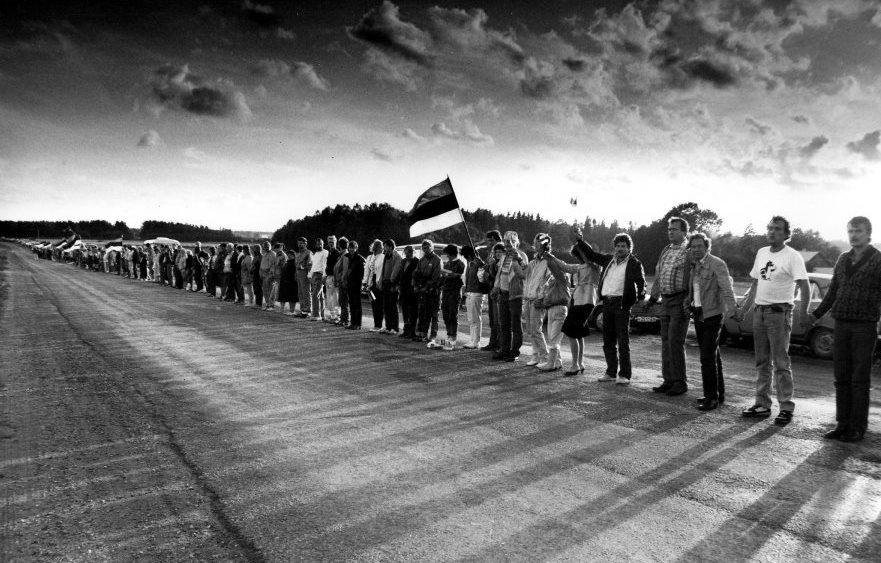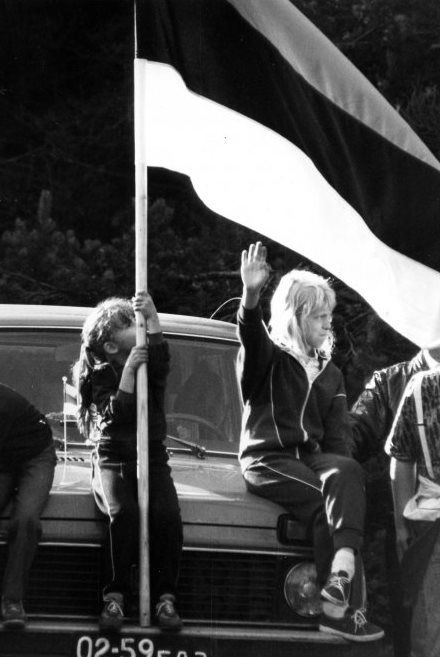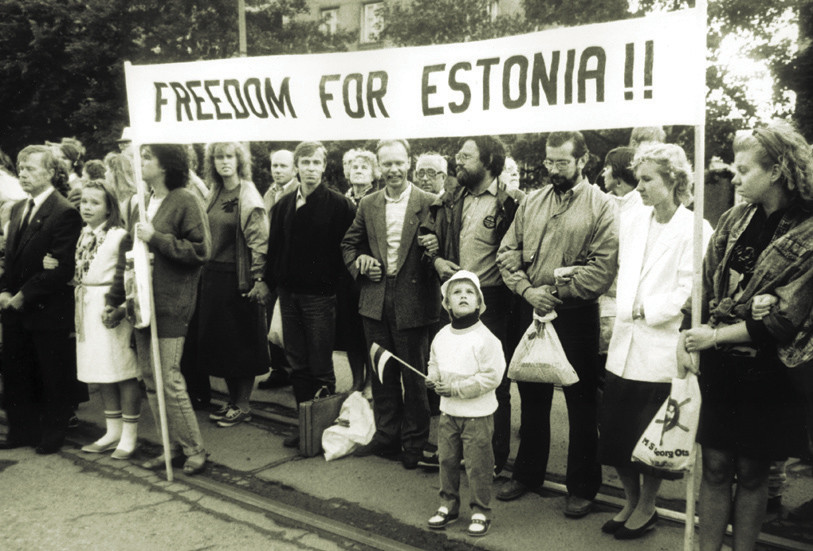On the evening of 23 August 1989, nearly two million people stood hand in hand across the Baltic states, forming a 600-kilometre chain from Tallinn to Vilnius. Known as the Baltic Way, the peaceful protest marked the 50th anniversary of the Molotov–Ribbentrop Pact and became a defining moment in the struggle to end Soviet rule.
Prelude to the events

The Baltic Way – also known as the Baltic Chain – was organised to draw global attention to the Molotov–Ribbentrop Pact, signed exactly 50 years earlier on 23 August 1939 by Soviet foreign minister Vyacheslav Molotov and his German counterpart, Joachim von Ribbentrop.
In secret protocols attached to the non-aggression pact, Nazi Germany and the Soviet Union carved up Finland, Estonia, Latvia, Lithuania, Poland and Romania into spheres of influence in violation of international law. Days later, Germany’s attack on Poland on 1 September 1939 triggered the Second World War, while the Soviet Union went on to occupy Estonia and Latvia on 16 June 1940.
The pact and its three secret protocols paved the way for extensive military and economic co-operation between Nazi Germany and the Soviet Union from 1939 to 1941. Soviet political and economic support enabled the Nazis to seize much of Europe and unleash persecution in the territories they occupied. In return, German backing allowed the Soviets to impose brutal repression across their own occupied lands.
On 22 June 1941 Nazi Germany turned on its former partner and invaded the Soviet Union. Though Moscow had begun the war in collusion with the aggressor, it ended as one of the victors. For the Baltic states, however, the essence of the Molotov–Ribbentrop Pact endured: Soviet occupation continued long after the war was over, until 1991.
Although the Molotov–Ribbentrop Pact and its secret protocols were known in the democratic West, the Soviet Union persistently denied that the secret clauses existed.
To symbolise solidarity among Estonians, Latvians and Lithuanians, the pro-independence movements – the Estonian Popular Front, Latvia’s Tautas Fronte and Lithuania’s Sąjūdis – conceived an extraordinary demonstration. Their aim was to highlight the popular demand for freedom, expose the illegality of Soviet rule and frame Baltic independence not as a political question but as a moral imperative. Thus the idea of the Baltic Way was born.
On 23 August 1989, the three Baltic nations astonished the world. For 15 minutes, some two million Estonians, Latvians and Lithuanians joined hands, demanding acknowledgement of the secret clauses of the Molotov–Ribbentrop Pact and the restoration of their independence.

People joined hands to form a 600-kilometre human chain, stretching from the foot of Toompea in Tallinn to the Gediminas Tower in Vilnius, passing through Riga and across the River Daugava. It was a living symbol of unity, binding the three nations in their drive for freedom.
Aftermath
The Soviet authorities reacted harshly. On 26 August 1989, the Communist Party’s Central Committee in Moscow declared: “Matters have gone far. There is a serious threat to the fate of the Baltic peoples. People should know the abyss into which they are being pushed by their nationalistic leaders. Should they achieve their goals, the possible consequences could be catastrophic for these nations. A question could arise as to their very existence.”
In the wake of the statement, pro-independence activists and the wider public feared that Moscow might resort to force – as it had in Hungary in 1956 and in Czechoslovakia in 1968 – to crush the Baltic national movements.

On 31 August the Baltic activists issued a joint appeal to the UN Secretary-General, warning that they faced the threat of aggression and calling for an international commission to monitor the situation.
US President George H. W. Bush and West German Chancellor Helmut Kohl pressed the Soviet Union to exercise restraint and pursue peaceful reform. Confronted with international scrutiny after four years of perestroika, Moscow softened its rhetoric and failed to act on its threats.
Finally, the Soviet Union admitted the existence of the secret protocols. On 24 December 1989, the Congress of People’s Deputies adopted a resolution entitled “Political and legal assessment of the 1939 Soviet–German non-aggression pact”, declaring the protocols null, void and without legal foundation.
The Congress acknowledged that dividing Soviet and German spheres of influence in the pact, along with other secret protocols signed between 1939 and 1941, violated the sovereignty and independence of several nations. In its decision, the Soviet legislature condemned both the pact itself and the signing of the clandestine agreements with Germany.
Russia, as the legal successor of the Soviet Union, has failed to uphold this decision – a continuing source of concern for Estonia, Latvia and Lithuania. Moscow still insists that its control of the Baltic states was lawful. “There was no occupation. There were agreements at the time with the legitimately elected authorities in the Baltic countries,” Sergei Yastrzhembsky, the Kremlin’s chief of European affairs, declared in 2005.
Outcome
The Baltic Way drew global attention to the Baltic cause and became a powerful symbol of solidarity among Estonia, Latvia and Lithuania. The non-violent spirit of the Singing Revolution won wide coverage in the Western media, projecting a strikingly positive image.
The national movements used the heightened exposure to frame Baltic independence as a moral, not merely political, question: the restoration of historical justice and the dismantling of Stalinism. Founded in 1988, the pro-independence movements grew more assertive, moving from calls for greater autonomy within the Soviet Union to demands for full sovereignty – achieved on 20 August 1991.
Recalling the Molotov–Ribbentrop Pact as a stark warning of collusion between two totalitarian regimes, the European Parliament on 2 April 2009 adopted a resolution entitled “European conscience and totalitarianism.”
The resolution urged EU member states to designate 23 August as the European Day of Remembrance for the Victims of All Totalitarian and Authoritarian Regimes, to be marked with dignity and impartiality. Estonia’s parliament endorsed the resolution on 18 June 2009, declaring 23 August a national day of remembrance.
Read also: Gallery: The Baltic Way in pictures.


I was there!
What was the feeling being there and being aware you were making history back then? Were you afraid?